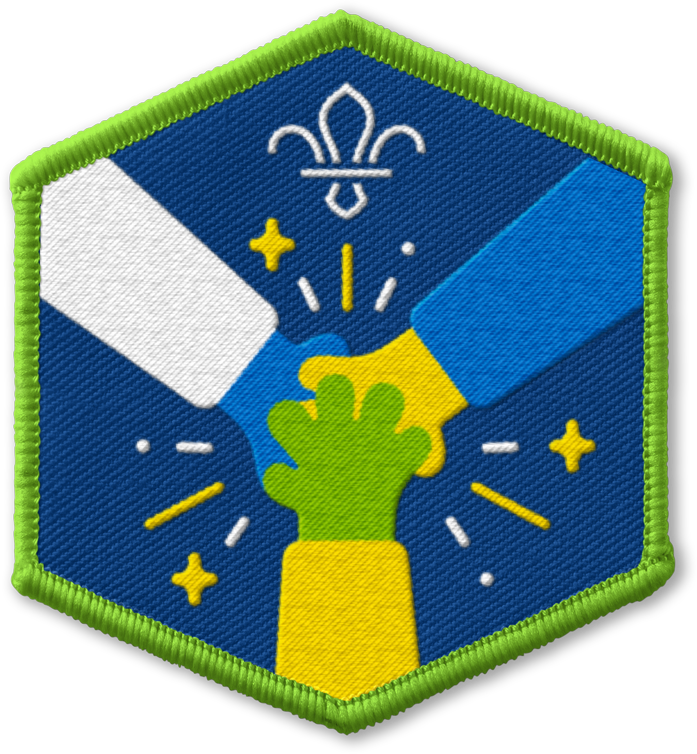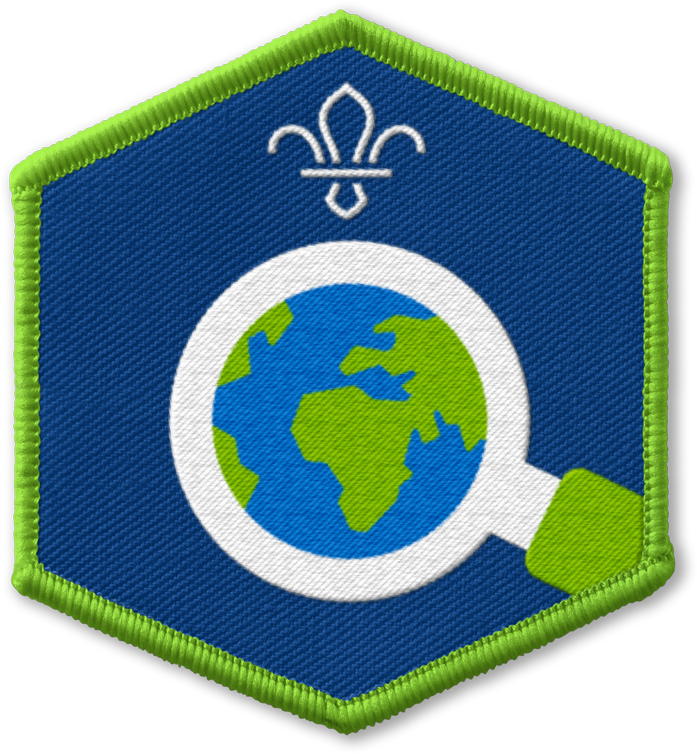Play a game of Ddakji
You’ll need
- Square paper
Before you begin
- Use the safety checklist to help you plan and risk assess your activity. Additional help to carry out your risk assessment, including examples can be found here. Don’t forget to make sure all young people and adults involved in the activity know how to take part safely.
- Make sure you’ll have enough adult helpers. You may need some parents and carers to help if you’re short on helpers
Running the activity
- Gather everyone in a circle.
- Explain to everyone you’re going to play a game called Ddakji. It’s a traditional South Korean game that’s played using folded paper tiles.
- Tell everyone that first, everyone needs to make a tile, then you’ll all play the game.
Create the tiles 타일 만들기
- Take a piece of square paper of any colour
- Next, fold the paper into thirds and leave it folded, so that you’re left with a rectangle shape.
- Take the rectangle shape’s bottom left corner and fold it upwards, until what was the left-hand side of the rectangle meets the top edge of the rectangle.
- Take the rectangle shape’s top right corner and fold it downwards, until it the right-hand side of the rectangle meets the bottom edge of the rectangle.
- Repeat this process and make another shape, exactly the same, using another square piece of paper.
- When you have two rectangles with folded triangle edges, place one on top of the other to create a cross shape. One should be vertically led on top of the horizontal other.
- Fold the left and right-side flaps from the horizontal rectangle in, so they overlap and ‘trap’ the vertical led rectangle shape.
- Now fold the top flap down of the vertical rectangle, and underneath the right flap of the horizontal rectangle.
- Then fold the bottom flap up of the vertical rectangle, and underneath the left flap of the horizontal rectangle.
- It should now have formed a square!
- If you want to see what a Ddakji looks like, take a look at this guide on how to make one.
Play the game 게임하자
- When everyone’s made a square, they’re ready to play the game. This game is best played in pairs. Throwing Ddakji may look or seem simple, but getting the angle and force necessary to flip the other player's tile takes practice, so remind everyone to be patient.
- Each pair should choose a throwing player – they may want to play Rock, Paper, Scissors to help them decide who this’ll be.
- The non-throwing player places their Ddakji tile on the table or floor.
- The throwing player tries to throw their tile so that it makes the other player’s tile flip over. They should try to throw from downward angle.
- If they are successful, they get a point.
- After each turn, whether successful or not, the players should swap roles so that the non-throwing player is now the throwing player.
- Keep playing, and switching who the throwing player is, until a player reaches 5 points.
Top tip
You may want to make tiles using several different sizes of paper to see what is easiest for you to flip. It's also helpful to try to aim for the fullest or puffiest part of the disk when you're trying to flip it.
Reflection
This was a traditional Korean game. How is it different to games we play here? Is it similar to any games that you know?
This was all about learning about different cultures and countries. Why do you think it’s important to learn about different countries and cultures? Do you know any games from other countries? What game would you teach someone from another country?
You needed a lot of patience to make the Ddakji and while playing the game. Was it hard to fold the Ddakji? Did anything make it easier? Or did you help someone who was struggling?
During the game, it took a lot of turns to flip the Ddakji. How did you make sure you were resilient and kept trying again? Did you want to give up? What stopped you from doing so?
You had to experiment with different angles, speeds and forces. Did it get easier as the game went on? What worked best? Did you find any good techniques to help you flip it?
Safety
All activities must be safely managed. You must complete a thorough risk assessment and take appropriate steps to reduce risk. Use the safety checklist to help you plan and risk assess your activity. Always get approval for the activity, and have suitable supervision and an InTouch process.
- Active games
The game area should be free of hazards. Explain the rules of the game clearly and have a clear way to communicate that the game must stop when needed. Take a look at our guidance on running active games safely.
- To make this easier, some tiles could be pre-made before the activity, so you can focus on the game or have an example to show people.
- To make this game easier or harder, change the number of points people need to get to win.
- Make sure there’s a role for everyone. If anyone doesn’t want to make or throw the Ddjaki, they can take on another role, such as scorekeeping or refereeing.
- An adult volunteer or young leader should be there to offer help to anyone who needs it during the make. People could also work with a partner or in a small group, so they can help each other. For example, they could help with the folding.
- If anyone struggles with fine motor skills, they may find folding things tricky. Remember to leave enough time for everyone to have a few goes at folding, and make sure that there are plenty of adults to support everyone. If anyone needs help or struggles with fine motor skills, give them the opportunity to work in pairs, either with another young person, with a young leader or an adult volunteer. The person they’re working with can help with the parts they find fiddly to do or tricky. If anyone struggles with fine motor skills, you could have some of the fiddlier parts of the activity pre-done or pre-made for people to use, such as making the Ddajki.
- If needed, let people be in bigger groups to make sure everyone’s supported in taking part in the activity. A young leader could join a group to help people to take part, too. This game can be played around a small table with the teams all helping one another.
- Take time and have patience while telling everyone what to do. Give short instructions clearly and concisely. If you need to, pause, then repeat the same instruction using the same words.
- You could have a practice round of the game to make sure everyone knows what they’re doing. Let young people help explain to each other what to do, too.
- People can move at their own pace, so you don’t need to make it competitive unless it works for everyone.
- If anyone needs support in throwing the Ddjaki, let people work in pairs and have pairs play against another pair to help them achieve this.
- For anyone who may not be able to hear the activities, consider printing them a version that they can read at the same time.
- This game can be played sitting or standing – whichever way works best for everyone.
All Scout activities should be inclusive and accessible.
Have a tournament and see who can win the most rounds in your section
Young people can choose what colours they’d like to use to crate their Ddakji.







